Introduction: The Joy of Daffodils in Spring
Daffodils are one of the most iconic symbols of spring, heralding the end of winter with their bright, trumpet-shaped blooms. These cheerful flowers are not only a joy to behold but also bring with them a promise of renewed life and warmth. As one of the first flowers to bloom, daffodils fill gardens and landscapes with vibrant shades of yellow and white, providing a sense of hope and rejuvenation. It's no wonder that gardeners around the world choose daffodils to adorn their spring gardens.

At Plantology, we're passionate about bringing joy through greenery, and daffodils are no exception. In this complete guide, we will explore everything you need to know about growing and caring for daffodils, from understanding their botanical background to planting, caring, and troubleshooting common issues. Whether you're a seasoned gardener or a beginner looking to add a splash of color to your spring garden, this guide will equip you with the knowledge to cultivate these delightful flowers successfully.
Understanding Daffodils
Botanical Background
Daffodils belong to the genus Narcissus, which is part of the Amaryllidaceae family. This genus includes a wide variety of species, hybrids, and cultivars that differ in size, color, and shape. While the most recognized daffodils feature yellow petals and a central corona, they can also come in whites, oranges, and even pinks. Some popular varieties include the classic 'King Alfred', known for its large flowers, and the delicate 'Thalia' with its white blooms.
The botanical name "Narcissus" is derived from a Greek myth that tells of a young man, Narcissus, who was so captivated by his own reflection that he turned into a flower. This rich history adds a layer of cultural significance to the daffodil's already enchanting presence.
Symbolism and Cultural Significance
Daffodils are often associated with new beginnings and rebirth, making them a popular gift during the spring. Their arrival signals the end of winter's dormancy, and they are commonly exchanged as gifts for celebrations such as birthdays, weddings, and anniversaries. In the language of flowers, daffodils stand for unrequited love, respect, and chivalry. They also serve as a reminder to embrace life's changes and live in the present moment.

In addition to their symbolism, daffodils have practical uses. They are utilized in some traditional medicines and are known for their ability to deter deer due to their toxicity when ingested. While the bulbs and foliage should never be consumed, they make excellent natural barriers against pests.
Choosing the Right Daffodils for Your Garden
Climate Considerations
Daffodils are hardy plants that can thrive in a range of climates. They grow well in USDA Hardiness Zones 3 through 9, making them suitable for diverse geographical regions. In colder zones, daffodils can survive frost and even snow, often blooming just after the last freezes of winter. For warmer climates, daffodils may require a period of chilling during the winter months to ensure proper blooming.
When choosing daffodil varieties, consider your local climate and select types that are known to perform well in your area. Our Plantology website offers a wide selection of plants that are carefully selected to thrive in different zones.
Garden Aesthetic and Planning
The diversity in daffodil varieties means there's something for every garden style. Whether you prefer a classic cottage garden with sweeping beds of bright yellows or a modern design with uniform rows of white and pastel hues, daffodils can fit seamlessly into any landscape.
When planning your garden design, consider how daffodils will look when paired with other spring bloomers. They complement other spring flowers like tulips, hyacinths, and crocuses beautifully. Additionally, choose varieties that have staggered bloom times to extend your garden's display across the spring months.

Planting Daffodils
When to Plant
Daffodils should be planted in the fall, a few weeks before the first hard frost. This timing allows the bulbs to establish roots before the ground freezes and ensures they are ready to bloom in spring. For specific planting times, consult the USDA hardiness zone guide to determine the best planting window for your location.
Preparing the Soil
Well-drained soil is crucial for daffodil growth. Before planting, improve the soil structure by mixing in organic matter such as compost or well-rotted manure. This enriches the soil and improves drainage. Daffodils thrive in slightly acidic to neutral pH levels, so test your soil beforehand and adjust if necessary.
Planting Technique
Plant daffodil bulbs at a depth of 6 to 8 inches, with the pointed end facing upwards. This depth protects them from winter frosts and ensures they have enough room to develop robust root systems. Space the bulbs approximately 3 to 6 inches apart to allow for healthy growth without overcrowding.
Once planted, water the area thoroughly to settle the soil around the bulbs. This initial watering is crucial to encourage root development before the onset of winter.
Caring for Daffodils
Watering and Fertilizing
In their early growing stages, daffodils require regular watering to establish themselves. However, be cautious of overwatering, especially in clay soils where drainage might be slower. Once established, daffodils are relatively drought-tolerant. Aim to water them once a week in the absence of rainfall, ensuring the soil remains moist but not waterlogged.

Fertilize daffodils in early spring with a balanced, slow-release fertilizer as their foliage begins to emerge. Avoid high-nitrogen fertilizers, as these could promote excessive leaf growth at the expense of flowers. If you wish to explore a variety of fertilizers and plant care products, check out our offerings at Plantology.
Pest and Disease Management
Daffodils are relatively pest-resistant due to their toxicity, but they can occasionally fall prey to pests such as bulb flies, slugs, and snails. To prevent these, keep garden areas free of debris and consider using organic pest control measures if necessary.
Fungal diseases like basal rot and bulb rot can occur if bulbs are planted in poorly drained soil. To prevent these issues, ensure your soil has excellent drainage and consider rotating areas where daffodils are planted each year if possible. Fungicides may be applied in severe cases, though natural control measures should be prioritized.
Post-Bloom Care
After daffodils have bloomed, it's essential to allow the foliage to remain until it has yellowed and withered naturally. This process enables the plant to photosynthesize and store energy for next year's bloom. Avoid cutting back the foliage prematurely, as this can weaken the bulb and result in fewer blooms in subsequent seasons.
Propagating Daffodils
Dividing Bulbs
Daffodils naturally multiply over the years, creating dense clusters that may lead to decreased flowering. To maintain healthy blooms, divide and replant the bulbs every three to five years. This process is best done in late summer to early fall after the foliage has died back.

To divide daffodil bulbs, gently dig up the clump and separate the bulbs. Discard any that are diseased or damaged, and replant the healthy ones with adequate spacing. Dividing not only rejuvenates the plants but also allows you to expand your daffodil displays or share with fellow gardening enthusiasts.
Troubleshooting Common Issues
Non-Blooming Daffodils
If your daffodils aren't blooming, several factors could be at play. Overcrowding can inhibit flower production, as can insufficient lighting. Ensure your daffodils receive at least six hours of sunlight daily and are spaced adequately. Nutrient deficiencies might also contribute; in such cases, a phosphorus-rich fertilizer could help stimulate blooming.
Yellowing Leaves
Yellowing leaves before maturity often indicate nutrient deficiencies, particularly nitrogen or iron. Conduct a soil test to determine any imbalances and amend with appropriate fertilizers. Keep an eye out for overwatering, which can also cause leaves to yellow due to root rot.
Exploring Companion Plants for Daffodils
Complementary Plants
Daffodils pair beautifully with other spring bulbs and perennials. Combine them with early-blooming tulips, vibrant hyacinths, or delicate crocuses for a mixed display of textures and colors. For a long-lasting spring show, consider including perennials like the stunning Agapanthus Lily of the Nile Blue from Plantology.

Creating a Balanced Garden Ecosystem
To create a balanced ecosystem in your garden, incorporate plants that attract pollinators alongside your daffodils. Plants like lavender, echinacea, and salvia not only enhance the aesthetic appeal but also promote a healthy garden environment by attracting bees and butterflies.
Conclusion: Enjoying the Fruits of Your Labor
Growing daffodils is a rewarding endeavor that brings vibrant colors and joy to any garden. With proper care, planning, and maintenance, these perennial favorites will bloom year after year, marking the arrival of spring with their charming beauty. At Plantology, we are committed to helping you achieve a flourishing garden. Explore our range of plants and horticultural products to complement your daffodils and enhance your garden landscape.
For more inspiration and expert advice, visit our Plantology online store, where you'll find tools, tips, and a community of fellow plant enthusiasts eager to share their experiences. Embark on your daffodil-growing journey today and experience the transformative power of spring blooms in your garden.
Advanced Care Techniques for Daffodils
Soil Amendments for Optimal Growth
For gardeners looking to take their daffodil cultivation a step further, experimenting with soil amendments can be beneficial. Incorporating materials like perlite or vermiculite can enhance soil aeration and water retention, providing ideal conditions for root development. Additionally, adding organic materials such as leaf mold or well-rotted manure can increase soil fertility.

A lesser-known tip is the use of charcoal to improve soil structure and health. Charcoal helps to regulate moisture, prevent rot, and can act as a natural filter to remove toxins from the soil. Consider mixing finely ground charcoal into your planting beds to see the benefits it can bring to your daffodil beds.
Advanced Nutrient Management
Moving beyond basic fertilization, understanding advanced nutrient management can noticeably improve daffodil growth and bloom quality. Sulfur and magnesium are two secondary nutrients that can significantly boost plant health. Sulfur aids in chlorophyll production, while magnesium is essential for enzyme activation and energy transfer within the plant.
Kelated iron supplements can also be considered if your daffodils display symptoms of chlorosis (yellowing of leaves), typically seen in iron-deficient plants. Tailor your fertilization strategy by regularly conducting soil tests to ensure all essential nutrients are available to your daffodils in the right proportions.
Incorporating Sustainable Practices
In the era of heightened environmental awareness, incorporating sustainable practices into your daffodil care routine is beneficial. One approach is to lean towards organic fertilizers, using compost or organic tea blends to nourish your plants without resorting to synthetic chemicals. Organic mulch like bark or wood chips can conserve moisture and suppress weeds naturally.
Rainwater harvesting is another sustainable practice that can benefit your daffodils. Collecting rainwater reduces dependency on municipal supplies and provides chemical-free water optimal for plant hydration. Invest in a rain barrel or establish a simple catchment system to start using rainwater for your garden.

Temperature Manipulation for Prolonged Blooming
Though daffodils are naturally adapted to Spring, gardeners with a penchant for experimentation can manipulate environmental conditions to potentially prolong their blooming period. By placing row covers over the plants in the late stages of winter, you can create a microclimate that limits exposure to adverse weather. Additionally, employing various mulch layering techniques can help moderate soil temperatures, ensuring the bulbs remain active longer.
Conservation and Historical Significance
Preservation of Wild Species
Beyond garden borders, daffodils hold significant ecological roles in their native habitats across Europe and North Africa. The preservation of wild daffodil species is crucial for maintaining biodiversity and ensuring genetic diversity for future breeding efforts. Raise awareness in your community or online gardening groups about conserving native populations by avoiding the collection of wild specimens and supporting botanical gardens and natural preserves.
Many daffodil species face threats from habitat loss and climate change. Engage in conservation activities like habitat restoration or citizen science projects that track plant populations in your local area. These efforts contribute to the broader goal of sustaining biodiversity and ensuring daffodils remain resilient in the face of environmental challenges.
Daffodils in Historical Context
The historical significance of daffodils is rich and varies across cultures. In Victorian England, they were symbols of chivalry, while in Wales, they are used as a national emblem and celebrated on St. David’s Day. In ancient Persia, daffodils were revered as symbols of eternal life, referenced in poetry and art for their beauty and endurance.

Collectors and historians may appreciate the challenge of sourcing heirloom varieties from the 19th and early 20th centuries. These heritage daffodils offer garden enthusiasts a connection to horticultural history, preserving the traits and appearances of plants grown by previous generations. Seek out local plant societies or online communities dedicated to heirloom plant cultivation for tips and potential sources to acquire these treasured bulbs.
The Science Behind Daffodils
Understanding Daffodil Toxicity
An intriguing aspect of daffodil biology is the chemical defenses that protect them from herbivores. Daffodils contain lycorine, which is toxic not only to animals but also to humans when ingested in large quantities. While this naturally deters herbivorous wildlife, gardeners should exercise caution when planting in areas accessible to pets and children.
Lycorine has been explored for its potential in medical applications, with ongoing research into its properties for inhibiting certain types of cancer cell growth. Though domestic use for these purposes is not advised, this aspect of daffodil science continues to attract academic and medical interest, illustrating the complex biochemistry of these captivating flowers.
Genetic Diversity and Breeding
The diversity among cultivated daffodil varieties owes much to their intricate genetic makeup. Gardeners and professional breeders engage in hybridization to develop new cultivars with unique colors, forms, and bloom times. By cross-pollinating different species and selecting for desirable traits, breeders have expanded the range of attributes beyond those found naturally.

Understanding genetic diversity within daffodils can also inform conservation strategies. By preserving both wild and cultivated genetic bases, gardeners can help safeguard the resilience of daffodil populations in changing climates. Engaging with local horticultural societies can provide exciting opportunities to learn more about the genetic aspects and breeding techniques influencing modern horticulture.
Community and Continuing Education
Joining Daffodil Societies
For those passionate about daffodils, joining a specialized plant or daffodil society is an engaging way to deepen your knowledge and connect with like-minded enthusiasts. The American Daffodil Society, for instance, offers resources, events, and networking opportunities with growers and researchers dedicated to the craft of daffodil cultivation.
Through these societies, members can access specialized publications, participate in competitions, and benefit from expert advice tailored to their climate and growing conditions. Such memberships provide a platform for exchanging ideas, experiences, and the joy of gardening with others, further enriching the experience of cultivating these stunning blooms.
Workshops and Educational Programs
Participating in workshops or formal educational programs can offer invaluable insights into advanced horticultural practices. Many botanical gardens, universities, and community colleges offer courses that cover a wide range of topics, from basic plant care to advanced plant physiology and breeding techniques. Attending these can enhance your understanding and capabilities in growing not only daffodils but across a spectrum of plant species.

Engage with online resources or local gardening clubs that offer tutorials and webinars, allowing you to continue learning and adapting your gardening methods in light of new techniques and discoveries. Staying connected with the latest developments in horticulture will empower you to expand your skills and ensure the lasting beauty of your garden.
Celebrating Daffodil Seasons
Seasonal Activities and Events
The arrival of spring often brings celebrations and festivals that feature daffodils prominently. Participate in or visit daffodil festivals and flower shows in your region to immerse yourself in the broader cultural and aesthetic appreciation of these flowers. Such events are excellent opportunities to discover new varieties, learn firsthand from expert horticulturists, and gather inspiration for your gardening endeavors.
From creating themed garden displays or participating in community gardening projects, these activities also foster a sense of community and shared enjoyment. Capture and share your seasonal daffodil displays through photography or social media, extending the joy and inspiration to others while celebrating your gardening journey.
Daffodils in Art and Literature
Daffodils have long captured the imagination of artists and writers, serving as metaphors and subjects in various art forms. Famous works, such as William Wordsworth's poem "I Wandered Lonely as a Cloud," celebrate their beauty and reinforce their symbolism of renewal and hope. Engage with literature and artwork inspired by daffodils to enrich your appreciation and find creative inspiration for your own projects.

Explore community art classes or online forums that encourage expressing the beauty of daffodils through drawing, painting, or photography. Creating art based on daffodils not only enhances your enjoyment of these plants but also deepens your connection with the broader cultural significance they've enjoyed throughout history.
Conclusion: The Timeless Appeal of Daffodils
The daffodil, with its bright blooms and storied history, occupies a cherished place in gardens and hearts worldwide. Throughout this guide, we've delved into the joys and intricacies of growing daffodils, exploring methods for planting, care, and appreciation of these beloved flowers. As you embark on or continue your journey with daffodils, remember that each bulb planted is a step towards more vibrant spring gardens filled with life and color.
At Plantology, our mission remains to support you in achieving a flourishing garden. Explore our extensive range of plants and products, designed to complement and elevate your daffodil-growing experience. Visit our Plantology online storefor the tools and advice you need to succeed, while connecting with a community that celebrates

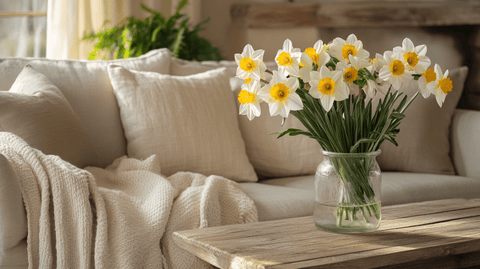














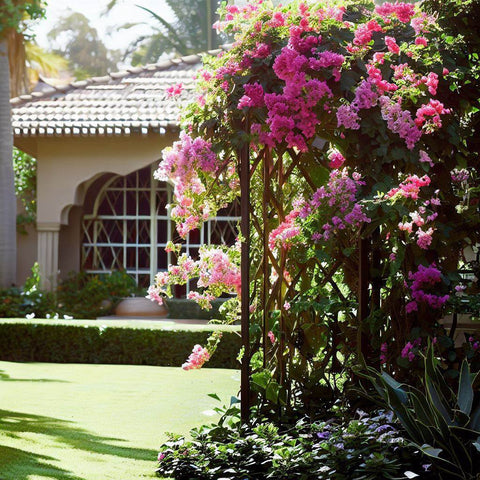
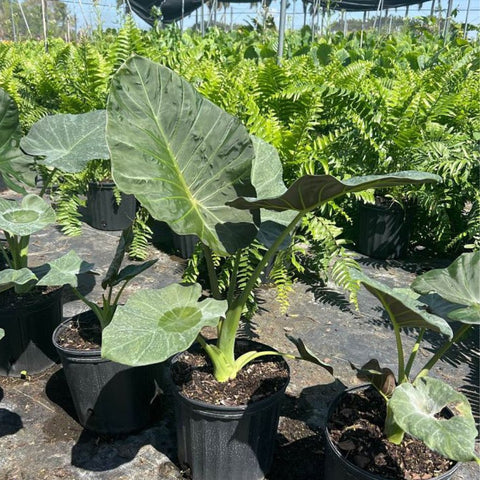
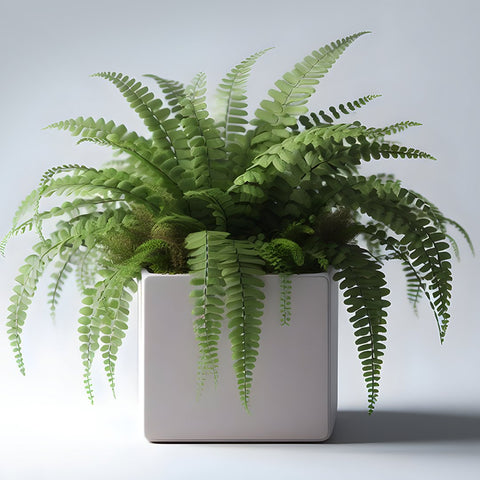
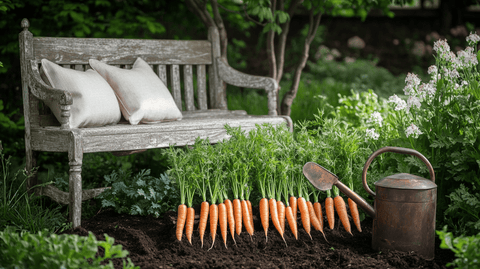










Comments (0)
There are no comments for this article. Be the first one to leave a message!